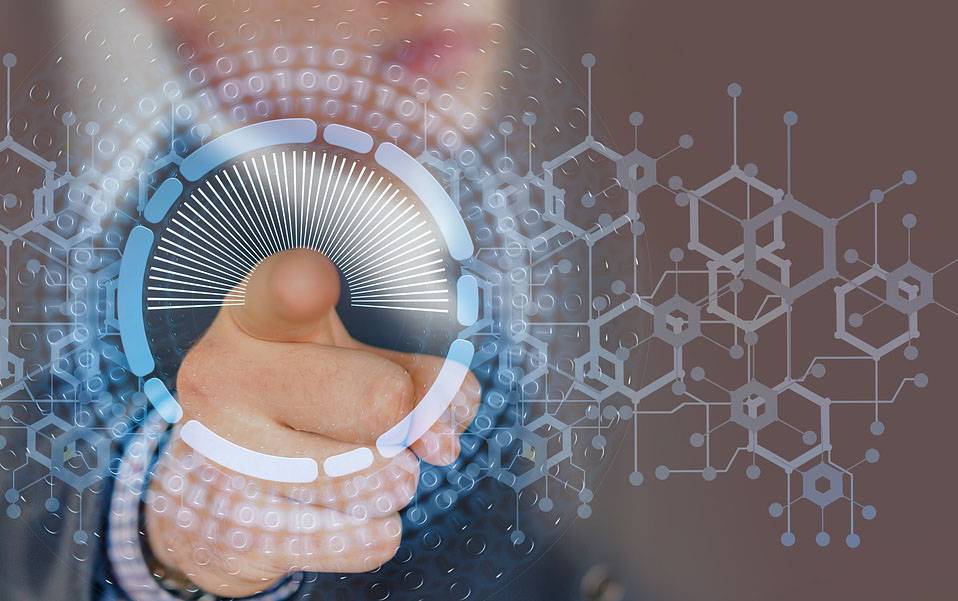With more consumer-facing digital health products entering the market every year, we all jump on the bandwagon of hacking into our bodies and how they function. Adorned with smart watches, bracelets and pendants, we look into dedicated mHealth apps for valuable insights about our health status. Now, all kinds of care consumers can easily access their sleep, mood, cycle, temperature, blood glucose, heart rate and other vitals.
We get used to monitoring the basic vitals for a better understanding of how the body responds to being deprived of the full night of sleep, which sparks curiosity on getting even more useful information. How about forecasting a disease developing in 10 years and rooted in our current lifestyle, finding a way to break the negative patterns and avoiding getting sick? While we are more than ready for this kind of superpower, it still takes significant time for the technology to hit this level of computing power and prediction accuracy. Luckily, the technology is already robust enough to give us a sneak peek into the emerging chapter in the preventive healthcare realm —
scientific wellness.
Wellness empowered by science
Scientific wellness embraces a variety of population health data and an extensive range of techniques for its processing and analysis, including AI and machine learning.
Scientific wellness enables a quantitative approach toward human health and creates highly personalized health profiles of individual patients based on their medical history, lab results, genome and metabolome, as well as patient-reported data from smart medical devices and wearables.
The patient’s body is approached as a system with many variables that are analyzed and tracked to:
- Maintain a person’s wellbeing
- Predict hereditary diseases
- Reverse pre-disease states
- Reduce healthcare costs with personalized treatments
This approach strives to revolutionize wellness, which currently focuses on changing a patient’s behavior in diet and lifestyle according to rather scarce medical data and without substantial personification.
Main components of scientific wellness
Scientific wellness offers a systematic view of a person’s organism, comprising the following three elements:
Cross-body insights
The traditional approach to wellness and healthcare is reactive, focused mostly on fixing what’s already broken or about to break. Therefore, a patient’s biological systems are usually reviewed separately, based on symptoms and medical history. This approach fails to work in case of asymptomatic conditions or diseases with a wide range of symptoms that can fit different medical cases. And if a patient isn’t aware of some genetic diseases in the family, the patient may find out about a problem only upon early or even late development of symptoms.
See also: Employee Wellness Plans’ Code of Conduct
Scientific wellness creates a multi-faceted review of different body systems that allows doctors to elicit patterns and understand a patient’s physiology, development and underlying risks for hereditary or non-hereditary diseases. The approach suggests harnessing the power of big data by acquiring a massive amount of information about an individual and carrying out the following procedures to extract actionable insights:
- Conducting the whole genome sequencing
- Analyzing blood, urine and saliva
- Evaluating gut microbiome
- Acquiring patient-generated health data from mHealth apps, smart medical devices and wearables
This approach can benefit population health in the future, too. Defining patterns across different conditions in individual patients allows clinicians to find common trends across populations, study the pathophysiology of diseases, elicit new diagnostic and prognostic biomarkers and contribute to preventive therapy development.
Here’s where another data cluster comes in handy. Social media are
actively researched as a data source for seasonal influenza predictions. Twitter can help to pinpoint trends for coming outbreaks up to 10 days faster than CDC’s Illness-Like Influenza Surveillance Network (ILINet). Further on, the personal disease susceptibility biomarkers can be analyzed together with the available data on previous outbreaks, assisting in epidemic control and prevention.
A powerful high-tech alliance
The other major component powering scientific wellness is a combination of approaches, technologies and computational tools for medical data quantification. For example, precision medicine that stands in the center of scientific wellness uses artificial intelligence and machine learning to accelerate genome sequencing. The trained algorithms streamline the search for known patterns and also find more underlying genetic correlations.
But why limit AI and machine learning applications in healthcare to DNA analysis only? Scientific wellness challenges artificial intelligence with varied data, from medical images to monthly blood pressure trends or daily mood entries. Testing the AI against other patient data can reveal even more subtle dependencies in human bodies -- for instance, finding the balanced nutrition for a particular patient and help them avoid diabetes.
Additionally, precision medicine starts adopting blockchain to
facilitate processing of big data, increase medical data security and anonymize personal information for use in clinical reporting and population health research.
Blockchain is perfect for the stack of scientific wellness technologies due to its secured and transparent nature. It allows all healthcare parties to become involved in healthcare democratization – as patient data becomes immutable and anonymized, clinical stakeholders, pharma companies, medical researchers, payers and patients themselves can collaborate across the care continuum and beyond.
Population health data clouds
Scientific wellness strives to support population health initiatives starting from individual patients. Each patient’s extensive and dynamic health profile is a distinct data cloud with billions of data points. They can be integrated to create a bigger picture in certain patient groups and uncover actionable insights about DNA-repair defects, particular conditions, susceptibility to developing morbidities and other health issues.
See also: The Value of Workplace Wellness
By integrating these big data pools, we will be able to identify trends in transitions from healthy to sick states across rare and common diseases and unlock the opportunity for more effective preventive treatment. Population health will be more focused on therapy for rolling the condition back and stopping it from development, not the other way around.
Another fad or near future?
The reason why scientific wellness might become the next stage in healthcare evolution is that the technology level already allows analysts to dive deeper in patient data. Major healthcare software development providers, such as
Itransition, prove it by pioneering and powering innovations in big data processing, precision medicine and medical image analysis.
The multi-faceted approach to patient health status, data analysis technologies and unlocked opportunities for collaboration among all healthcare stakeholders creates an unprecedented area for preventive and reactive care delivery. It will be possible to predict genetic disorders developing at any age, avoid health deterioration in chronic patients and kick start preventive treatment creation. We can only welcome this scientific wellness era ahead and wish it becomes the next healthcare reality.






